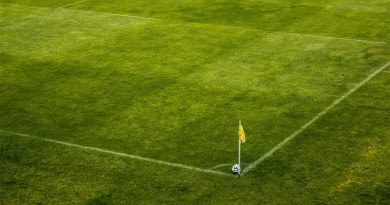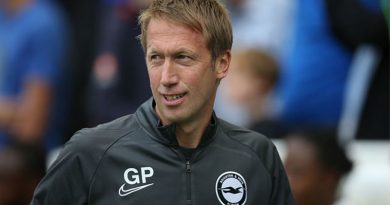Brighton vs Crystal Palace: A Peculiar Rivalry from the 70’s
One would imagine Brighton to have some kind of feud with their seaside neighbours – Portsmouth or Southampton – both being located little around 60 miles apart from the green pastures of the Amex Stadium.
However, even that distance doesn’t warrant Brighton to rival the other Hampshire club in a heated derby.
Above that, Portsmouth and Southampton have a longstanding rivalry of their own in the South Coast Derby.
Brighton’s privation from any kind of feud with their south coast opponents even went so far as to the local press calling clashes between Southampton and Brighton as a ‘derby fans don’t care about’.
From coast to capital, the oddities surrounding the rivalry between Brighton and Crystal Palace cannot be understated.
The duo is located an hour’s drive away from one another, in two different counties. They do not possess any history of sorts and nor do they regularly battle for honours.
Most of football’s great rivalries have either come up due to the teams being located in the same region, say Liverpool and Everton, or through decades of high-intensity friction for top accolades, such as Liverpool and Manchester United.
But when it comes to Brighton vs Palace, hell, people don’t even agree on the name of the ‘derby’ – is it the A23 or M23 derby?
As one of the most peculiar derbies in the world, let alone England, one begins to wonder how they ended up on top of one another.
It all began in the mid-70’s – the golden era of dirty tackles, unseen hooliganism, ‘Beatles’ hairstyles and sponsor-less jerseys.
It was a decade of great upheaval for a nation that took its time recovering from the heartache of the national side’s failure to make it to the World Cup.
The domestic football scene was packed to the rafters – Liverpool’s age of total supremacy and Nottingham’s fluttering moments of glory ushered an age when English clubs dominated.
Amid all these, it was really in 1976/77 when the rivalry between Brighton and Crystal Palace began, fuelling a fierce fixture that still packs as much of a punch today.
They had met regularly since 1906 but the animosity between the ‘Seagulls’ and the ‘Eagles’ only arose in the latter half of the 70’s.
And much of the credit goes to two former Tottenham Hotspur players who ended up on the opposite dugouts with a vow of silence that had only grown since their bitter time together at Spurs.
The backstory to the birth of the Brighton-Palace derby can be found in the two seasons preceding the appointment of the former Spurs teammates – Alan Mullery at Brighton and Terry Venables at Palace – in the summer of 1976.
A string of high-intensity clashes took place between 1974 and 1976, with excess drunk crowds, smoke bombs and relentless banter – friendly or not – making up the gist of the encounters.
Mullery and Venables’ presence only added fuel to the fire. The latter was second-in-command to the former’s captaincy at White Hart Lane and is said to have been affected by this very power
dynamic during their time in North London. Now, both rookie managers were set one task to achieve – promotion from the Third Division – and there it began.
With identical ambitions devouring the aspirations of both teams, just one season was needed to give birth to a rivalry that still stands strong today.
They met as many as five times during 76/77 and it was in the FA Cup that things actually got running for both sets of supporters.
With two ties in the competition after subsequent hard-headed draws, the second replay headed to Chelsea’s Stamford Bridge in a bid to settle the winner.
It was one that enraged the Seagulls. Palace zoomed to a 1-0 lead inside first twenty minutes, before unbothered Brighton continued to dominate the game.
A Peter Ward strike was disallowed for handball, with Palace defender Jim Cannon later admitting that he had deliberately pushed Ward in the back.
Cannon’s admission only took the piss after the match, but it was the final-quarter hour of the tie that really got Brighton fans raging.
Palace’s Barry Silkman gifted Brighton a penalty in the 78th minute, which Brian Horton calmly slotted in the back of the Paul Hammond’s net, before referee Ron Challis disallowed it due to players allegedly encroaching the penalty area before the kick.
Horton retook the set-piece, but this time Hammond astonishingly saved it, to send the Eagles through to the next round.
Mullery charged at Challis after the whistle amid chants of ‘Challis of the Palace’ by the Brighton faithful.
As he was being escorted off the pitch past Eagles supporters, he searched his pockets, pulled out a handful of change, threw it and shouted, “That’s all you’re worth, Crystal Palace!”’ He was fined a hundred quid for it.
The battle for promotion by being champions that season fell neither club’s way, as they both ended up behind league leaders Mansfield Town.
Their respective times in the Second Division across the next two seasons (1977/78 and 1978/79) was full of pure competition, even fighting out the championship spot by one point in the latter campaign, as Palace won the title.
The duo was promoted to the English top flight in 1979/80 and quickly found themselves back in the lower tiers as the years passed by.
Things haven’t changed much since the forty years that have passed by. The rivals are still in contention for a top half finish in the Premier League, tossing away the days of old when they had to fight for a promotion.
The mid-table neighbors are well in line for a top 10 finish, according to statistics provided by football betting sites.
However, it is Brighton who are odds-on-favourites to edge Aston Villa, Southampton, Leicester City and Crystal Palace into a high finish.
With the aforementioned resource, one can learn a great deal of nuances regarding placing one’s hand on betting. Players can also benefit from rewards and bonuses such as free bets, cashbacks and loyalty points.




